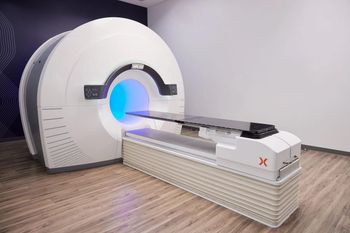
Siemens tackles budget niche with new single-head E.Cam camera
New version slated for low-cost single-head marketWith more than 600 of its variable-angle E.Cam gamma cameras installed worldwide, the nuclear medicine group of Siemens Medical Systems continues the robust recovery that began with the debut of
New version slated for low-cost single-head market
With more than 600 of its variable-angle E.Cam gamma cameras installed worldwide, the nuclear medicine group of Siemens Medical Systems continues the robust recovery that began with the debut of E.Cam in 1996. At the upcoming Society of Nuclear Medicine show in Los Angeles, the Hoffman Estates, IL, vendor will add to its E.Cam line with the unveiling of a sixth configuration of the camera, a single-head SPECT unit that Siemens hopes will address the low-cost single-head market. Siemens expects to begin shipping this version in August.
Since we introduced the variable-angle unit, weve come out with a number of configurations, said Paul Ottoson, marketing manager of nuclear medicine. What were trying to do (with the new camera) is come in a bit more cost-effectively to address the low-cost single-head market with another E.Cam configuration.
Siemens first introduced a single-head version of E.Cam in 1997, but that model includes many features, such as automatic body contouring and 511-KeV collimation, that put it at the premium end of the single-head market. The new E.Cam model cuts costs by dispensing with many of the bells and whistles that some single-head users dont need.
Also at the SNM show, Siemens will feature works-in-progress technologies, such as cadmium zinc telluride solid-state digital detectors. It will also show hybrid technologies, such as a PET/CT device the company has installed at the University of Pittsburgh and a PET/SPECT system that uses detectors made from lutetium oxyortho-silicate (LSO) rather than sodium iodide (NaI) or bismuth germanate. Siemens has been experimenting with LSO detectors as part of an LSO/sodium iodide combination, but its newest system employs only LSO detector material, Ottoson said. In March, the company shipped the first LSO PET unit to a clinical site in Cologne, Germany, to test whether LSO is a suitable detector material.
The results from our first LSO system installation are promising, Ottoson said. Were getting the first proof of concept that LSO is a positron-detecting material. The next step will be to establish alpha sites of an LSO/NaI PET/SPECT device, which we expect to begin later in the summer.
Siemens will present further clinical results for such E.Cam extensions as Profile attenuation correction for SPECT and coincidence imaging detection techniques, as well as software developments, Ottoson said. At the show, the company will feature a number of IDL-based software products like a gated blood-pool SPECT program, an iterative reconstruction package for SPECT, Emory Cardiac Toolbox for cardiac quantification, Nuclidose for oncology quantification, and a fusion program for PET/SPECT and MRI/CT data.
Newsletter
Stay at the forefront of radiology with the Diagnostic Imaging newsletter, delivering the latest news, clinical insights, and imaging advancements for today’s radiologists.




























